Weather continues to cooperate nicely. For another day or two we plugged along at about 5 knots in light winds on the beam. Comfortable, safe, and stress-free. Can’t ask for much more than that out at sea.
One afternoon the wind piped up a bit and we were flying along in 23 knots. We were feeling pleased with ourselves for bringing in the big Parasailor anchor just in time before the wind got to be too much. We’d fired up the engines, turned up into the wind, raised the mainsail and rolled out the jib, before turning back downwind.
Since we had the engines on we decided to make water for an hour to top up the tanks. I went downstairs, flipped the switch, and nothing happened.
Then the boat started to veer quickly off course. We ran to the helm and found all the power had gone out. We had no autopilot and no instruments. Uh-oh.
Ali took the wheel and did her best to keep us going relatively straight downwind, with the waves, while I tore into the power issues. Of all my tools I carry around I don’t think anything is as useful to me as my multimeter, regardless of vehicle. Within a few minutes I’d traced the problem to a battery switch. To be honest, I’m not exactly sure what happened. I believe the batteries were pretty low before we’d turned the engines on a few minutes earlier and the initial draw from the watermaker startup might have just been too much.
I MacGyvered a way around the switch as a short-term solution to get the system running again. At least with the autopilot back on we could relax. Since then I’ve continued to watch the voltage carefully, and we have run the watermaker as well. Nothing appears to be out of whack.
Ali did great steering the boat in the blustery conditions, but it was definitely put into perspective just how crucial the autopilot is. The idea of hand steering the boat for two weeks is pretty unfathomable.
Next problem was with the freezer. We discovered that none of the meat on the bottom was freezing. There appears to be two reasons for this. One, the freezer is a piece of crap. Two, we overpacked it with warm stuff. In the future we’d stock it up over the course of a few days. We had to throw out quite a bit of ground beef, and are busy shifting things around as they freeze up solid. This thing is a brutal power hog as well, and it is running twenty-four hours a day.
After that came a squeal from the port alternator. I checked the belt and it was good. I cleaned everything up, gave a few areas a shot of oil, and it’s been quiet again ever since.
Here’s one of those things that I just hate about catamarans. Maybe it’s different in the really big cats, I don’t know, but in most of these in the 40-foot range or lower the engines are either located under the bed itself in the aft bedroom, or they’re located outside under a hatch in the stairs. Both of these suck. The bedroom engine sucks because of the heat and noise, and the outdoor engine sucks because in any kind of nasty weather it will be virtually impossible to check on or service the engine. The outdoor are also susceptible to leaky hatch seals letting saltwater drip onto the engine.
I desperately miss my Grand Banks engine room. Chalk this category up to an L for catamarans, a W for monohulls, and a huge W for trawlers.
The office with a view. Check out Wanderer Financial to see what the heck I work on these days.
The Parasailor. This is our first experience with a big sail. We’ve never even had a spinnaker before. I have to say, this thing is an absolute wonder. If sailing downwind with a Parasailor flying was the way all sailing was conducted, the whole world would live on a boat.
The sun will always find a way to your eyes.
It’s an ongoing process trying to learn the best way to run the lines and set the sail, but this thing is incredibly forgiving. Downwind in ten knots it’s pulling us along at about 5.5 – 6 knots effortlessly. With the main and jib running wing-and-wing we’d be doing about a knot slower, and we’d be doing it with a whole bunch of noise from the rig clanking back and forth. The Parasailor just floats out there without a sound, shifting one way and then the other as the boat rolls in the waves.
Card game with the kids, flat seas, kite flying. Perfection.

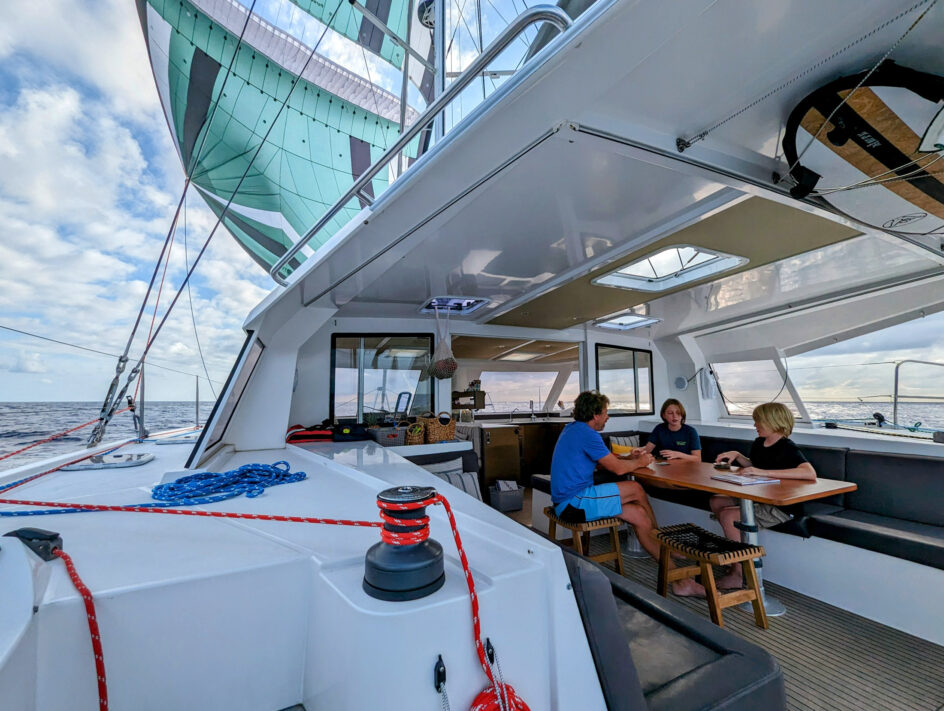
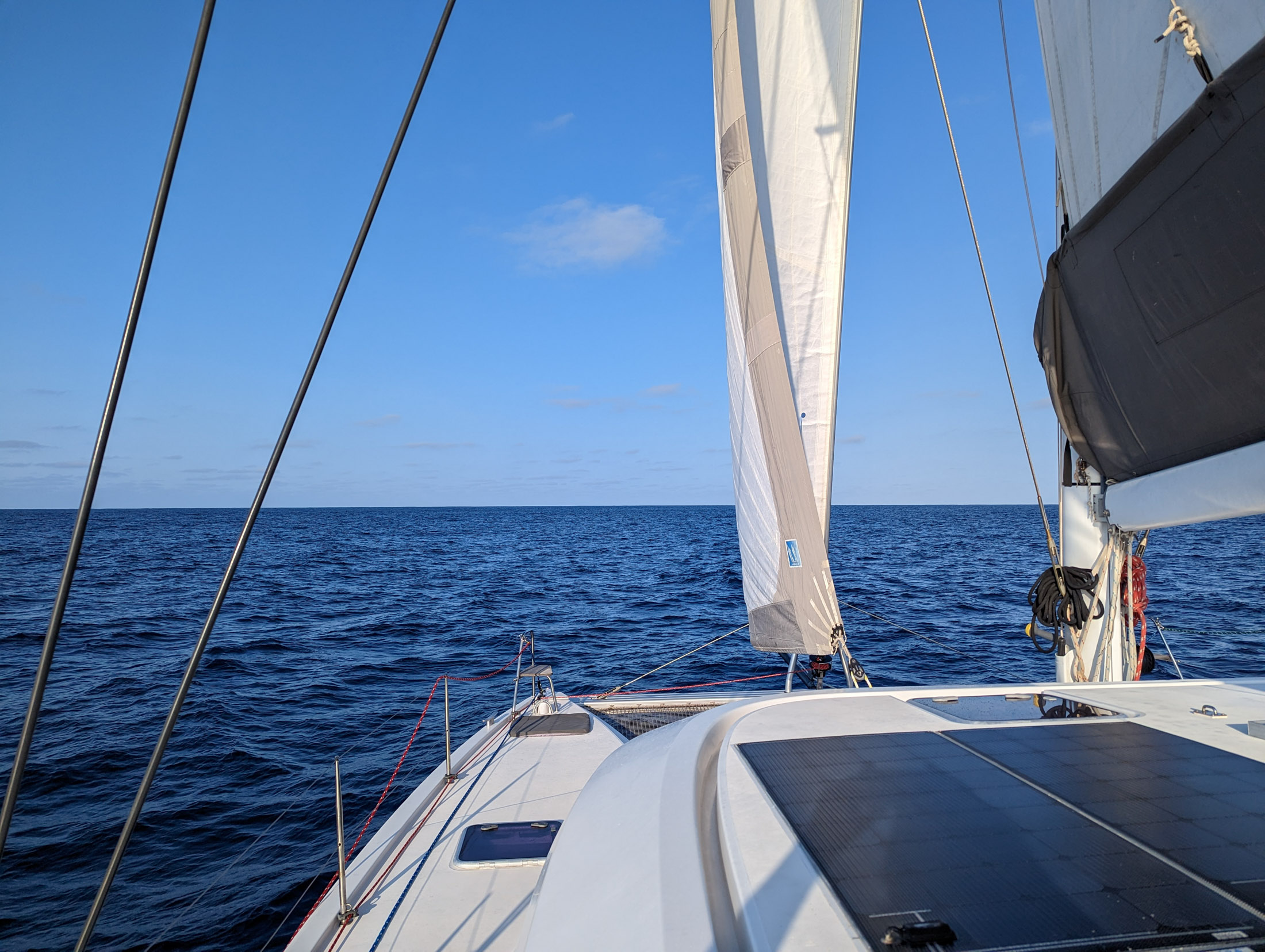
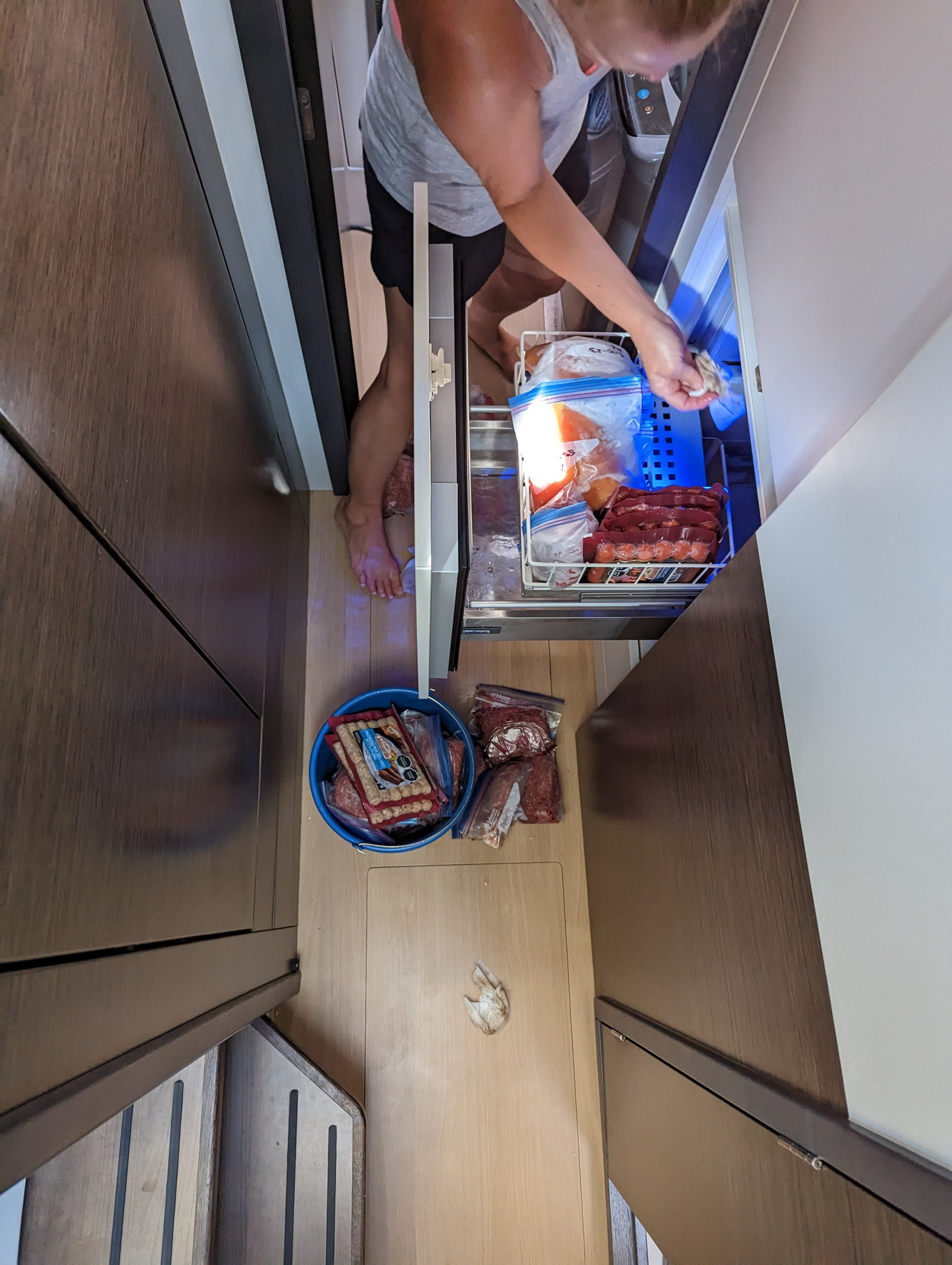
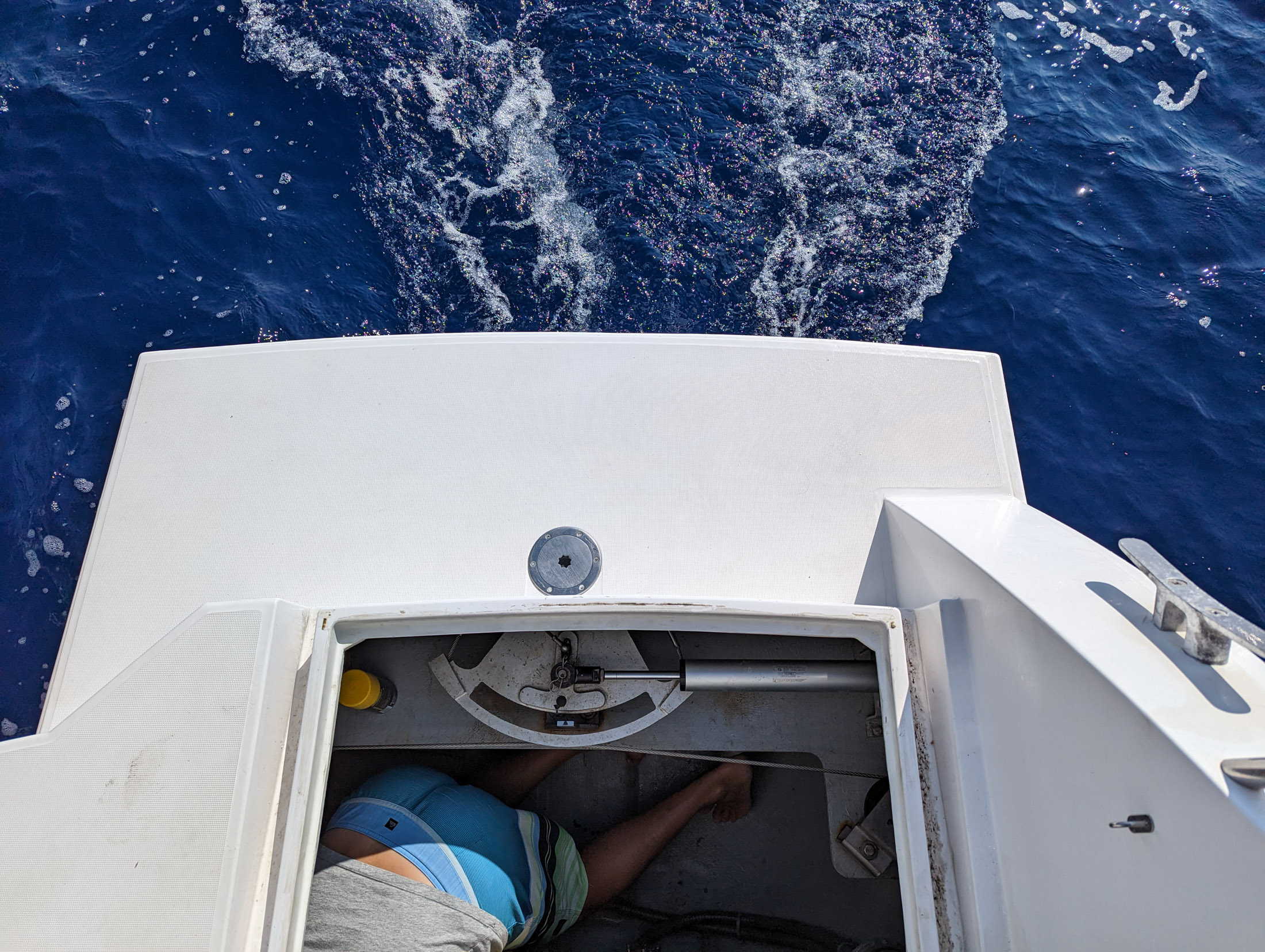
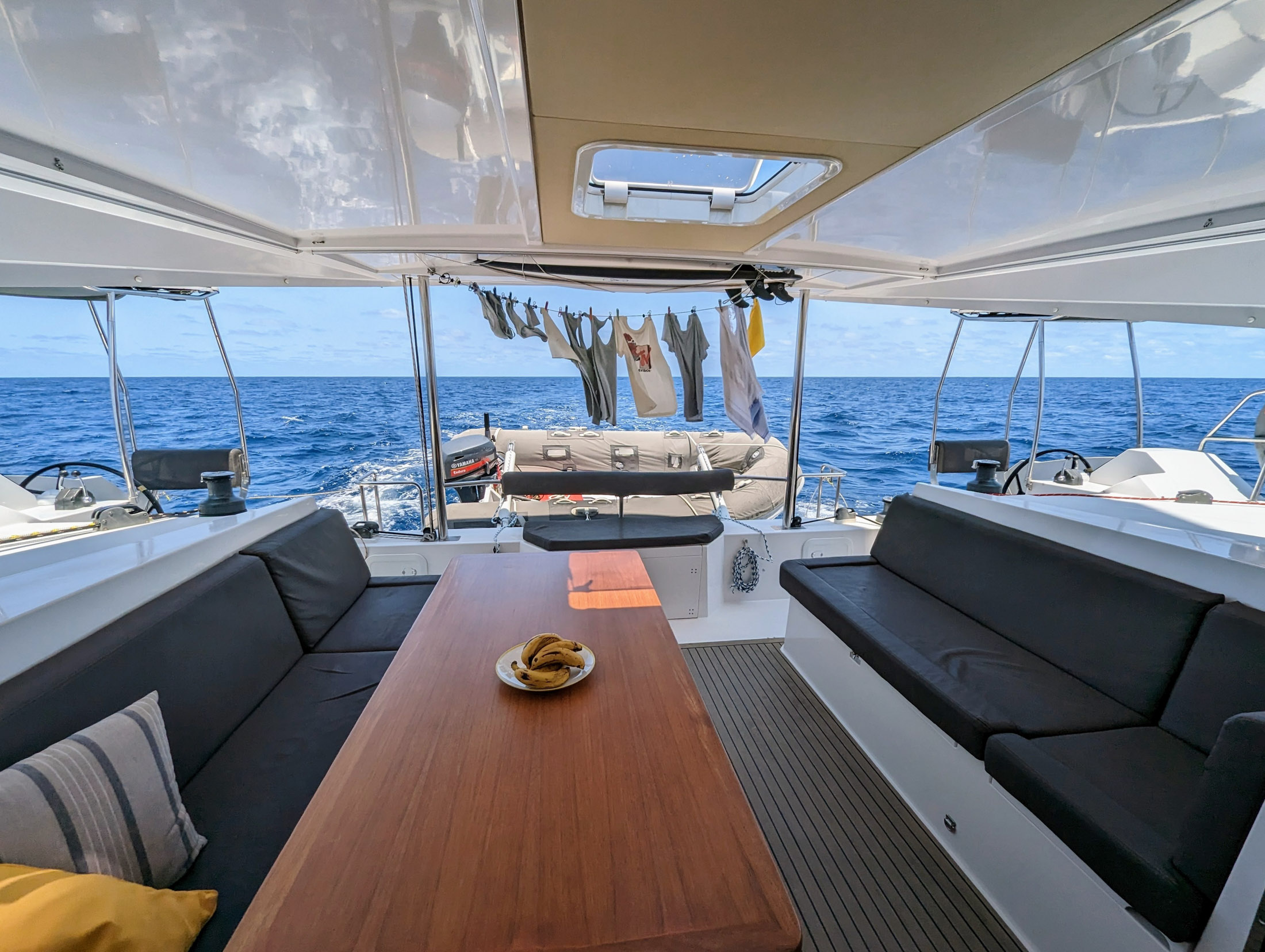
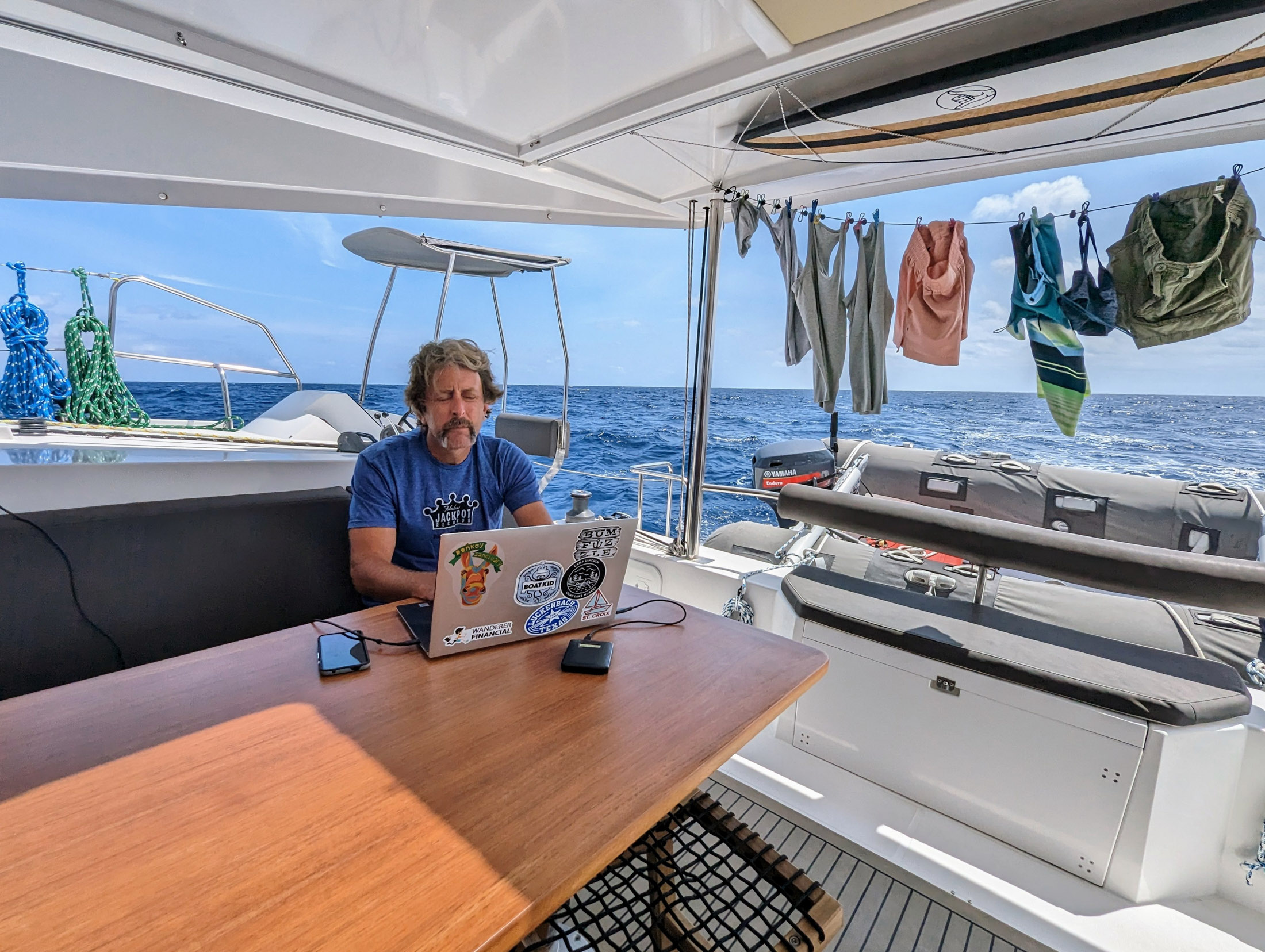
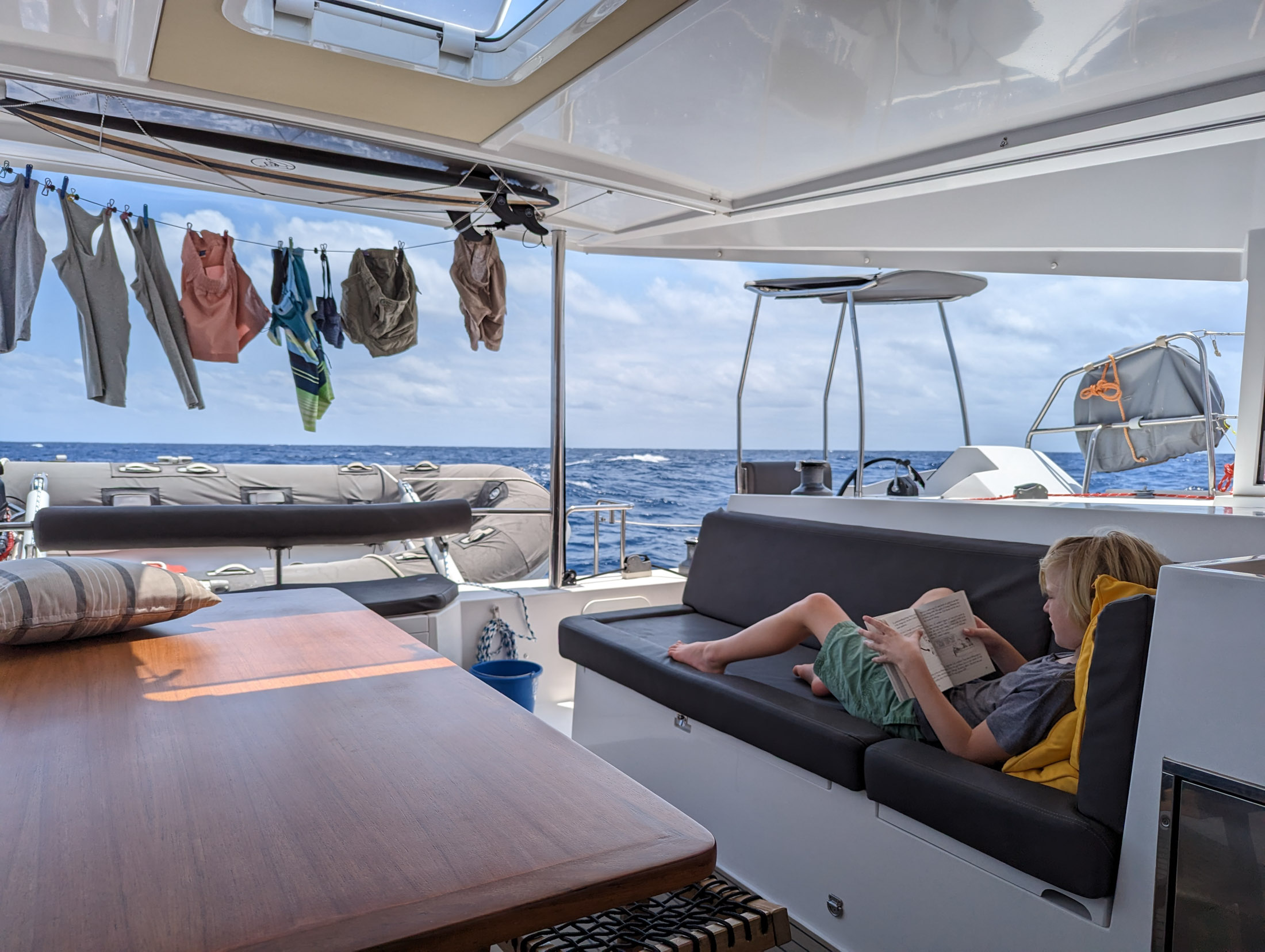
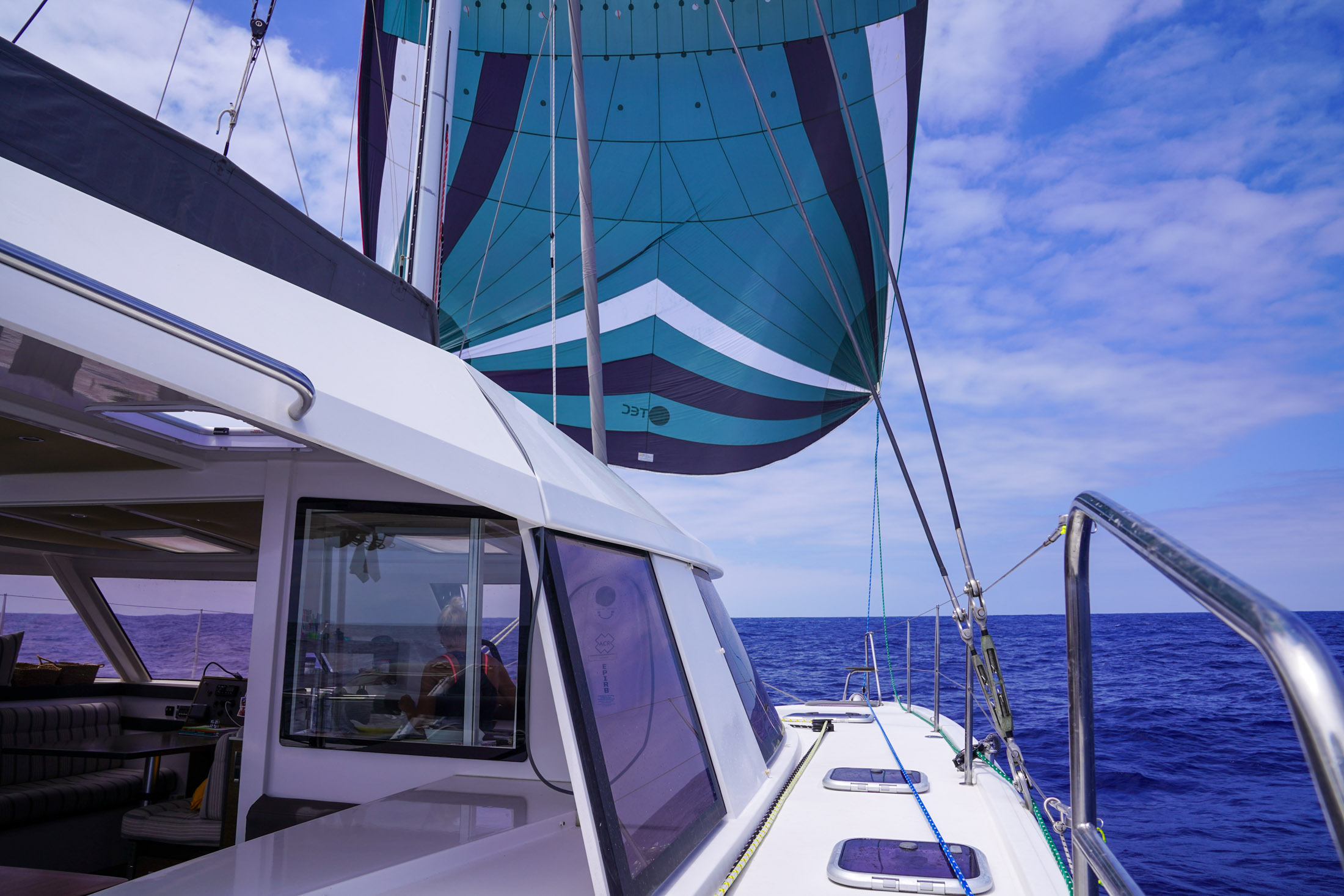
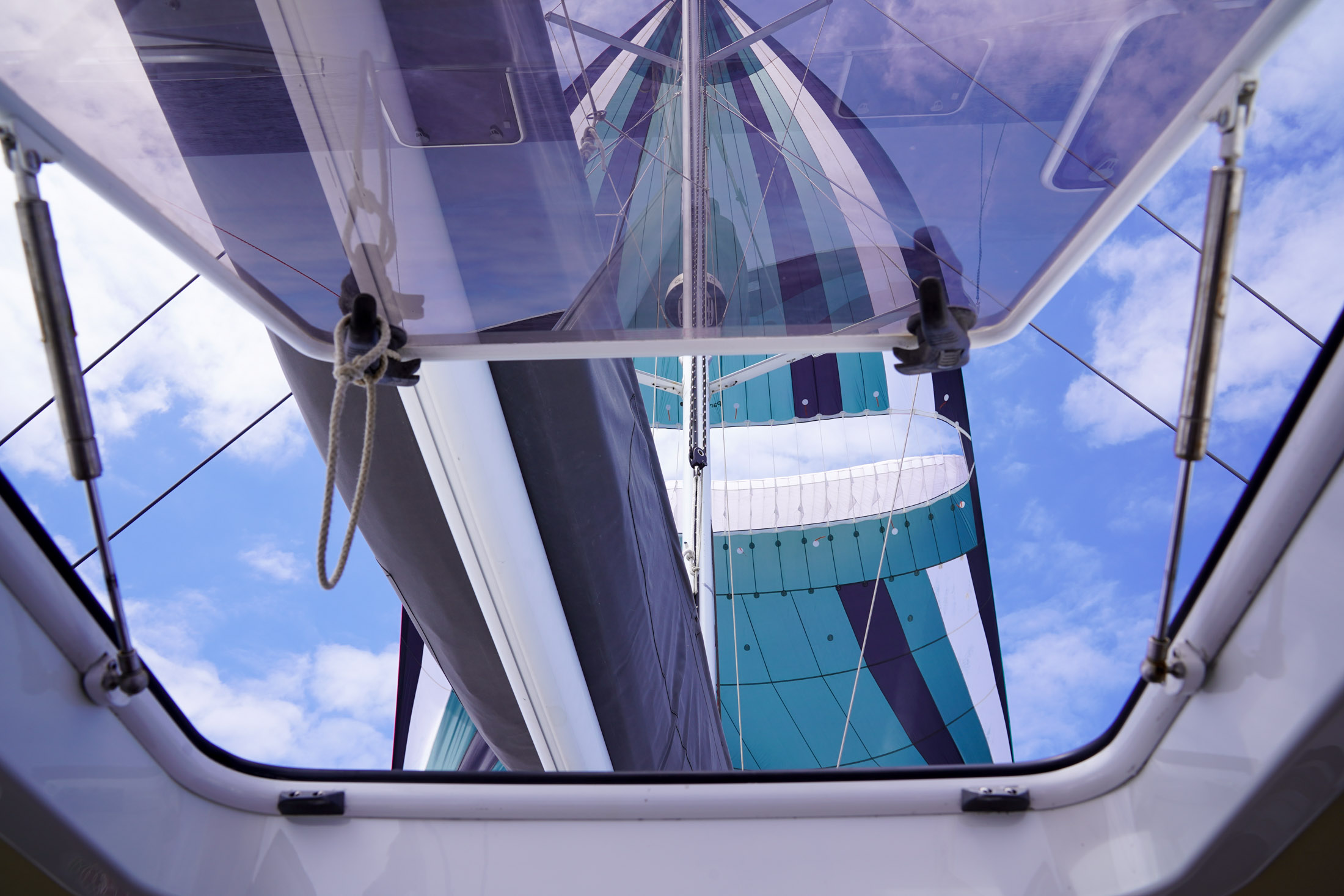
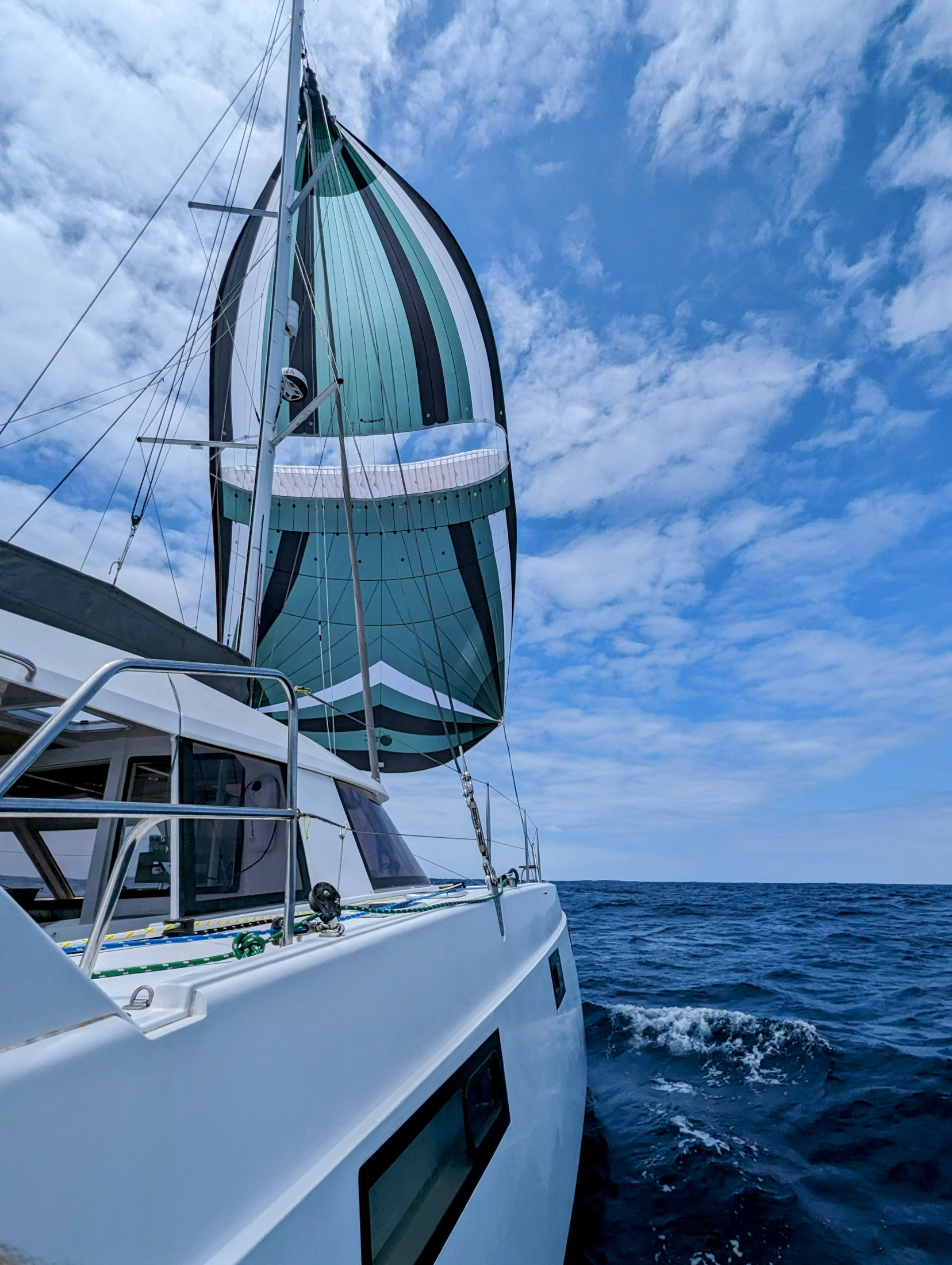
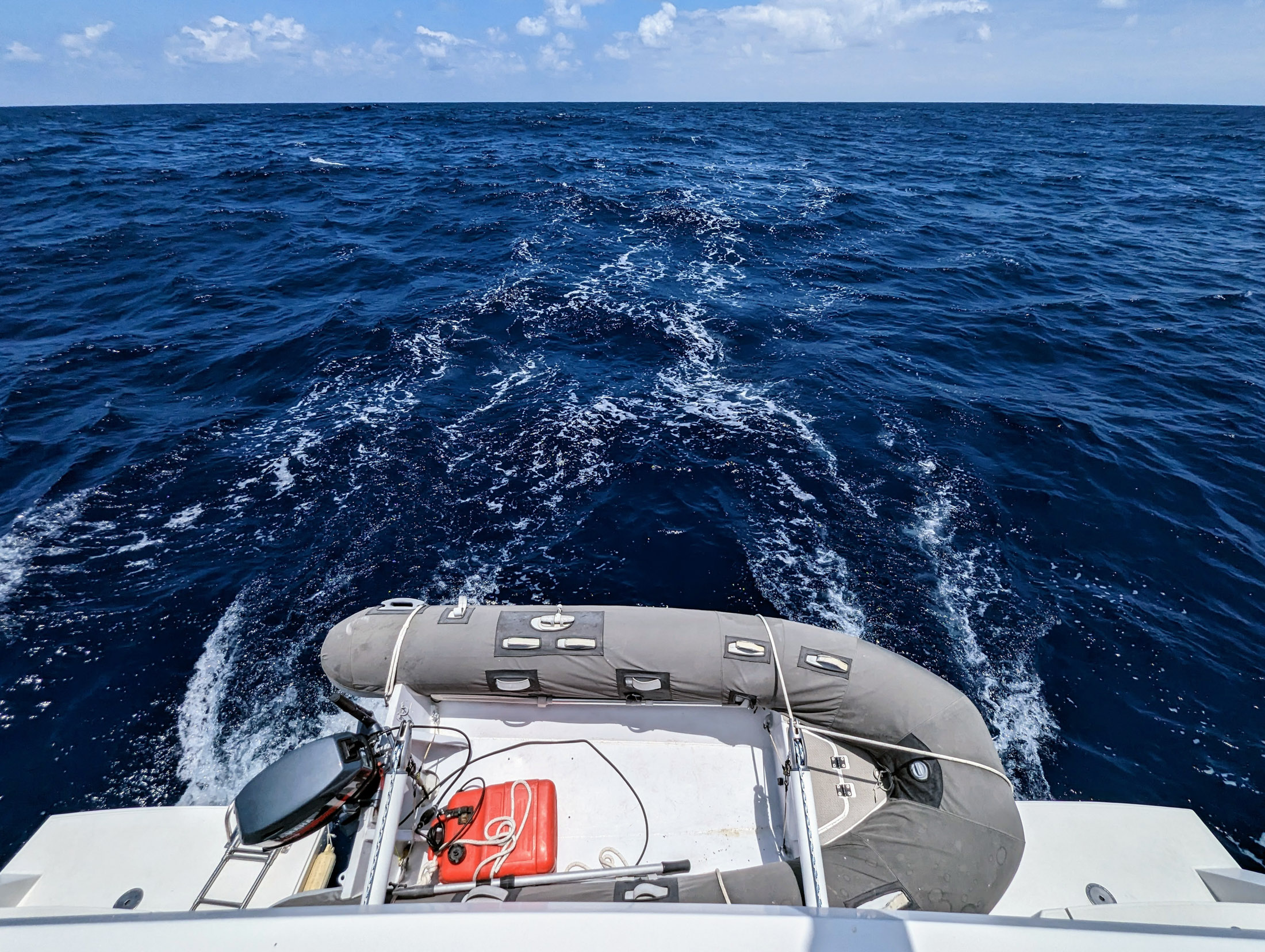
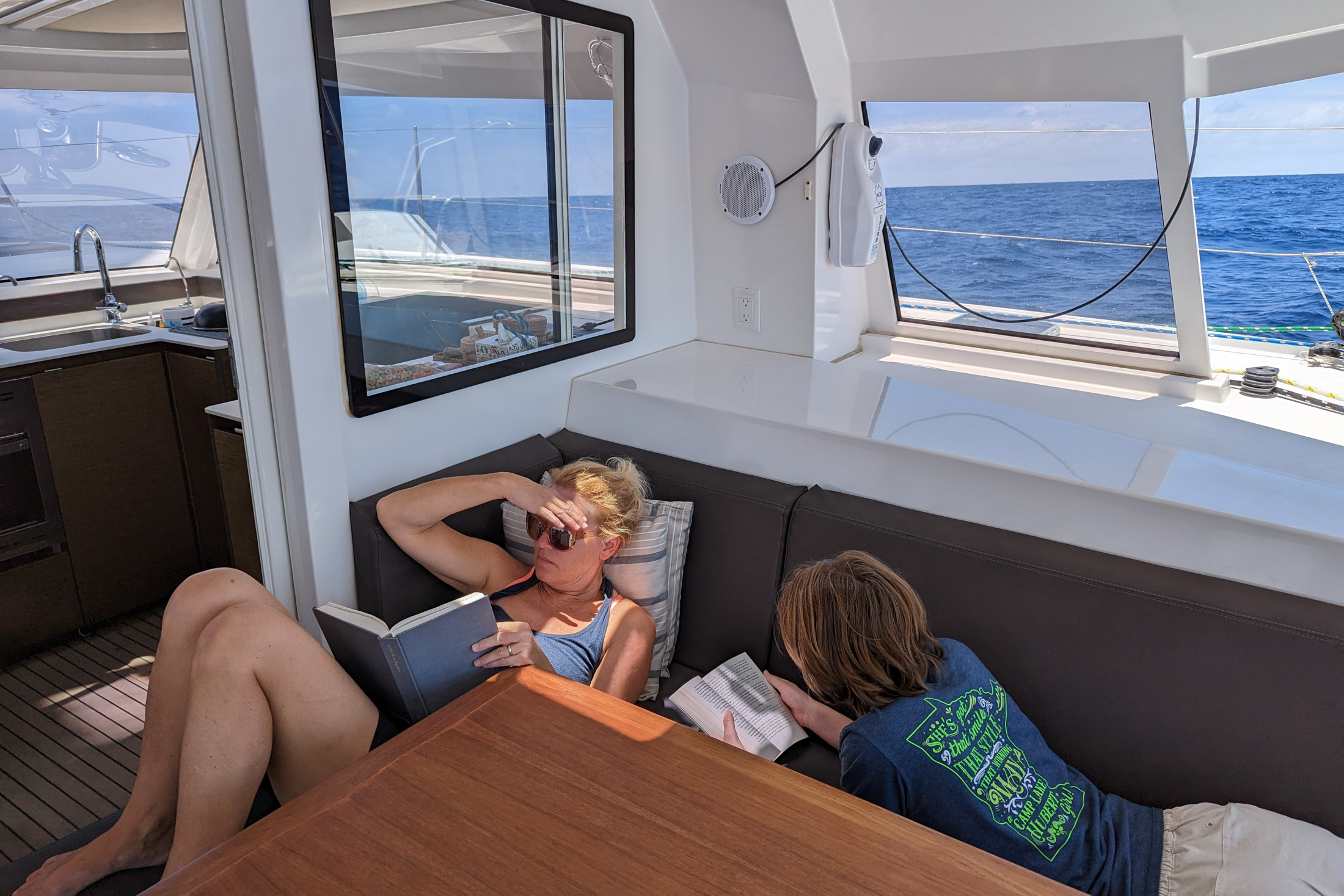
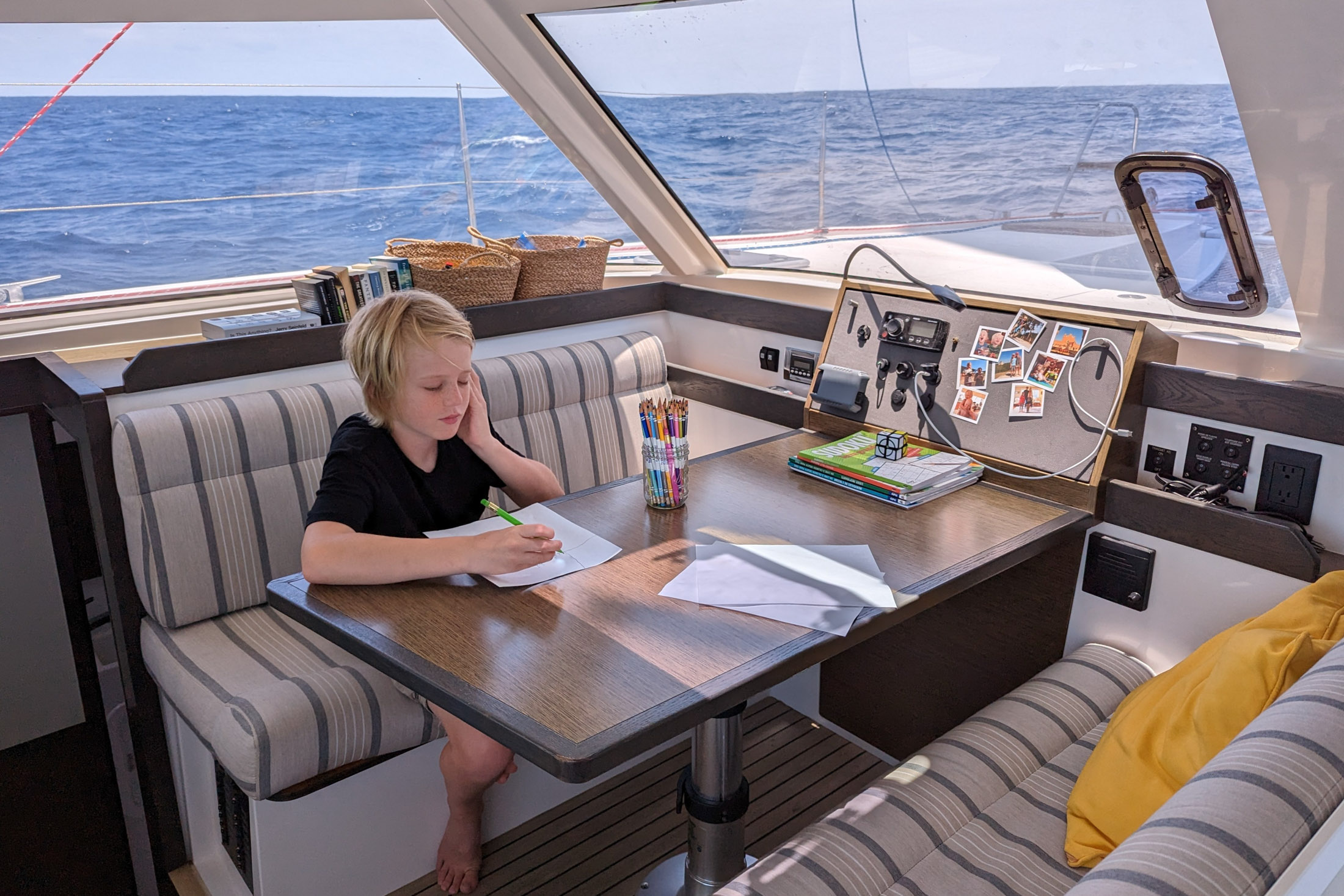
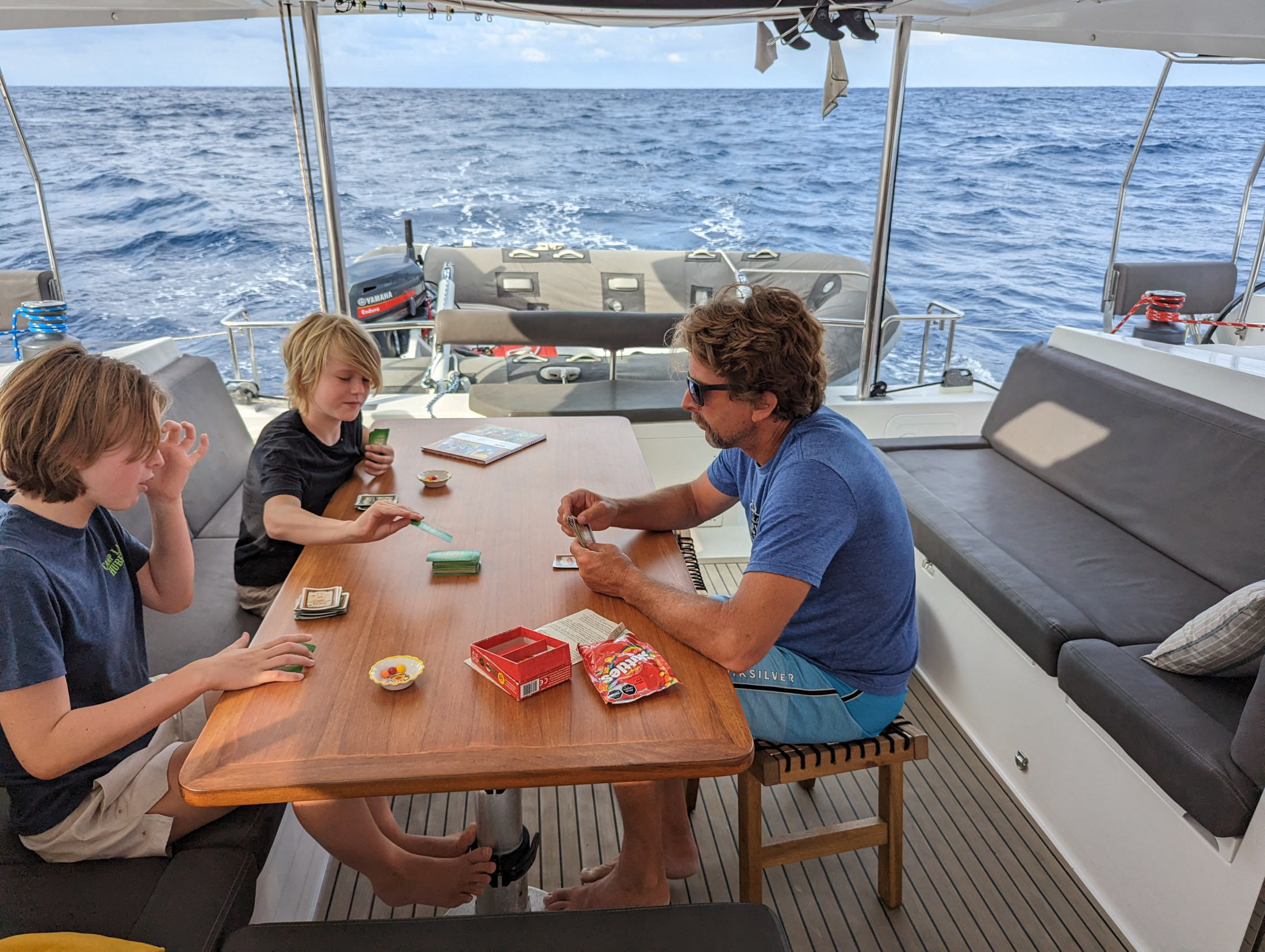
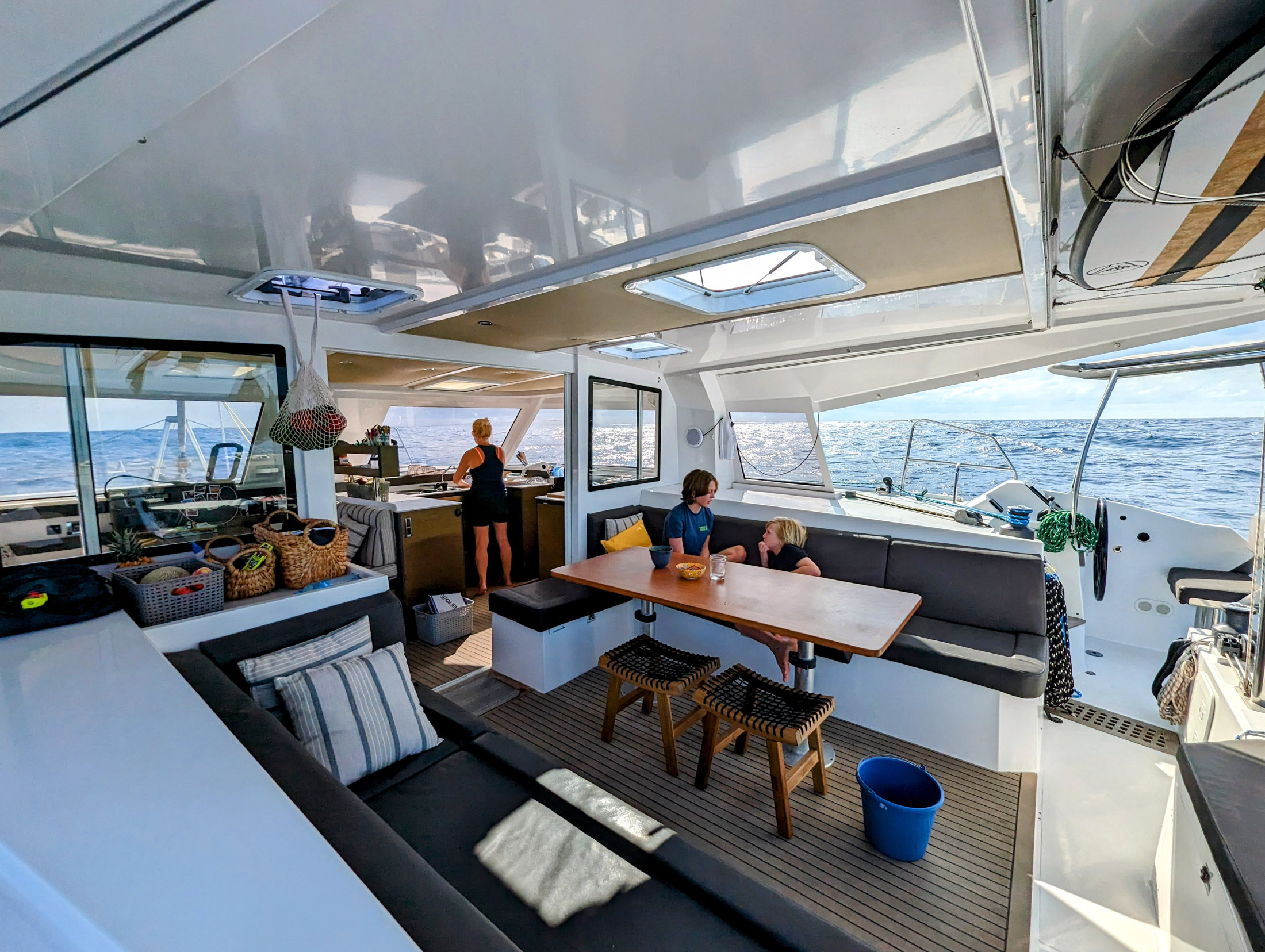
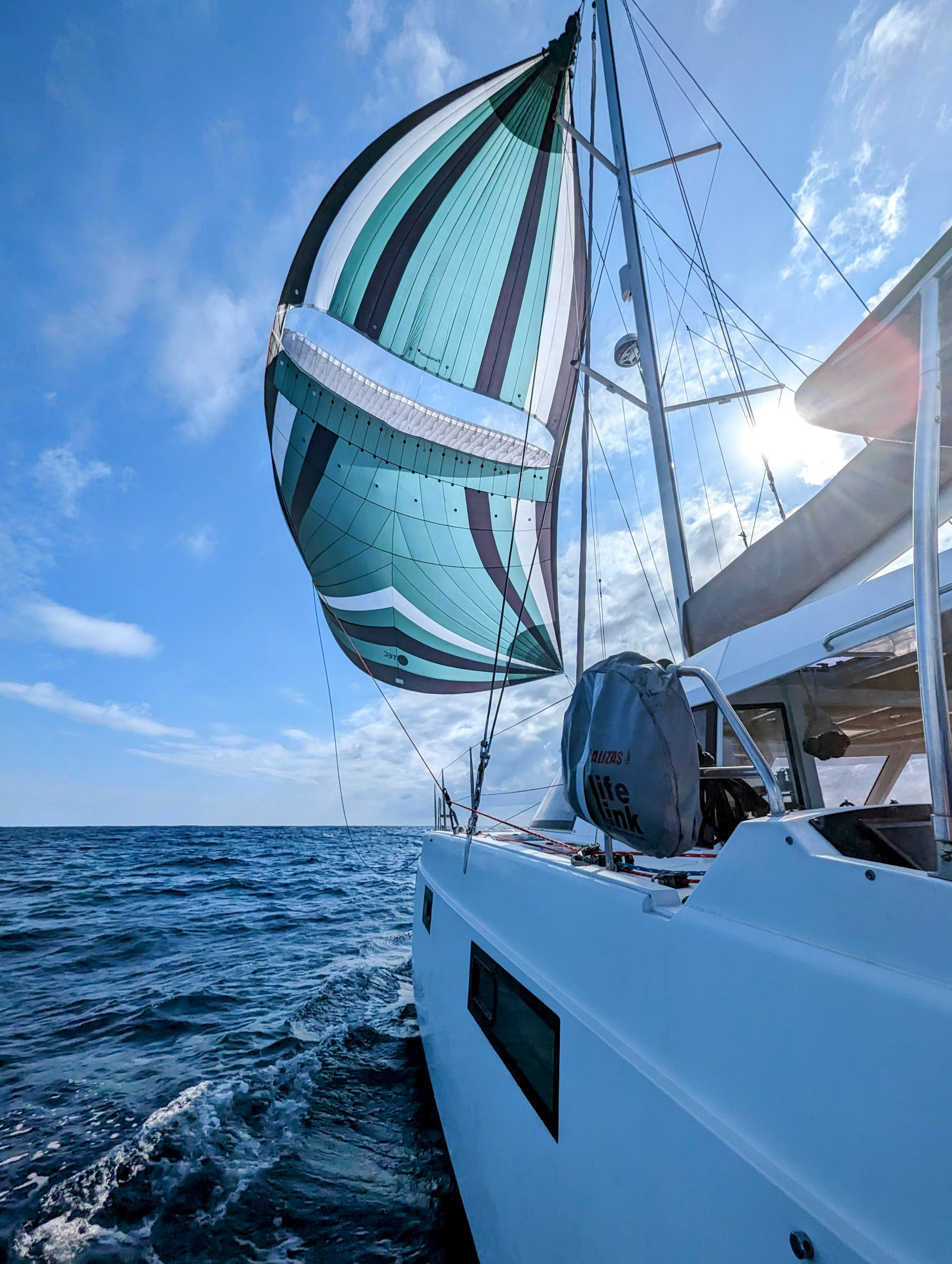
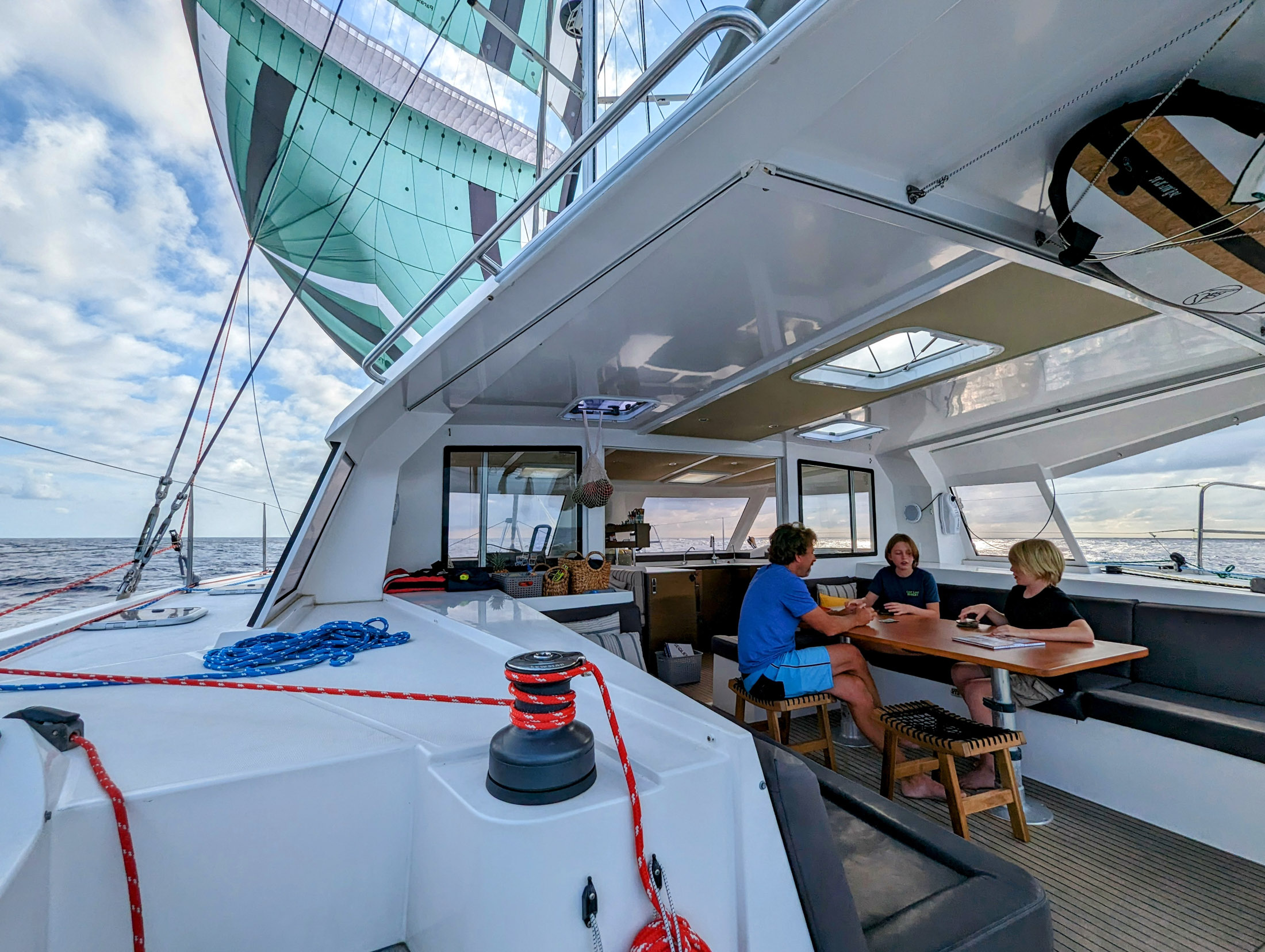
15 Comments on “Flying the Kite”
Great photos and nice to see you making posts from out at sea.
On the issue with the freezer, have you checked the air flow around the condenser coils, I’ve seen many fridges and freezers installed without enough air flow causing them to run all the time and not cool or freeze food properly.
David
Forgot to mention two other causes that could result in those symptoms with the freezer not operating properly, the condenser coils could be dirty/dusty causing the heat to buildup, or the defrost cycle is not working causing an ice build up.
I’ve had so many issues with fridges/freezers over the years and most were caused by not enough air flow which lead to early failure of other components, move the “broken” fridge into the garage out in the open and it will run for another 20 years trouble free.
Great post! Beautiful pix!
Brought back memories of when our watermaker died in the Bahamas, no water to be had on the nearby island either, as they also had power outage issues-LOL! The joys of boating, why we’re now nomadic landlubbers. 🙂
You’re so lucky to all have each other on this exciting adventure! Such a fun family!
When we had freezer issues it turned out to be crud growing on some part outside, from sitting so long at the dock. We had a diver come to clean it off & afterwards it worked like a charm….not sure how you’d manage that at sea?
Thanks for including us on your wonderful journey! Hope the weather continues to cooperate!
Have fun!
Gail
That’s a neat chute! Ram air spinnaker. Stoked for your great internet so we can see the adventures.
Very interesting chute. Never seen one like it. I guess that shows how dated I am. Anyway, we tried a true kite on our monohull about 15 or so years ago. Could never get the thing to set right for more than a few minutes. Yours looks like a better arrangement by far! Great troubleshooting on your electrical issues. Always something . . . . Really, it’s part of the fun. If everyone could do it I am afraid the seas would look like NYC.
Hi neighbors!
Great to see you making progress. We miss you all and miss hearing Ali’s laugh!
We are off to Africa in a week to live with the elephants.
Safe travels
Jay and Terri
CADENZA
Great photos! Totally relate to the virtues of a GB engine room. Fair seas.
Great post. Glad the updated spinnaker is such a huge success. Yes I understand the gripe about cramped engine spaces on the catamaran, but looking at all of you sprawled comfortably around the cockpit and salon, playing cards as the catamaran stayed level, maybe the wonderful living spaces compensate nicely for the engine space issue.
Keep the pictures coming they’re gorgeous….Safe travels…..
Wonderful 👍!
This is so fun to get a slice of your life out on the sea! Beautiful parasailor! Glad you’re all doing well and safe! Sad about the meat loss. May your fair winds continue and the boat maintenance be minimal!
Check out PDQ Antares cats, shaft drive accessible from under the midship floor, wide open. We converted an older one to electric drive and it’s fabulous! 2 kids on board Maine to Caribbean, hopefully Pacific next year. Y’all have been wicked inspiration the past ten years!
Thanks so much for the “at sea” posts. Brings me back out there (but wow, the flat space and airiness of the cat vs. the mono”hole” — amazing).
I’ll add to the freezer notes: If you have a Danfoss/Secop compressor* (or possibly even if it’s a clone), they use a resistor on the board (or no resistor) to “set” the RPM the compressor runs at. Lower RPM is more efficient, but often can’t keep up in really hot weather, freezing vs. refrigerating, etc. Usually when you buy one, they have basically guessed what speed you would want to run it at. The ones I’m familiar with (Danfoss/Secop BD35 and BD50) can run anywhere between 2,000 rpm (no resistor in place) and 3,500 rpm (varying resistor sizes to get the varying rpms – see below).
For my own refrigerator (Vitrifrigo) it has a BD35 compressor and normallly I run it pretty easy. So what I did was make a little dogleg of wire with a switch, so switched one way I have no resistor (2,000 rpm, normal conditions), and switched the other way I have high rpm and can really get it ice cold even in 100+º temps.
I realize you may not have any resistors just hanging around, but… maybe you do? Cannibalize one from something less necessary?
If you have a BD35 or BD50 then these are the values. You don’t have to stay with these exact “steps” but could use any value in between. These can vary a little even with say a BD35, but I’ve used values for the most common controller number. If you want to post back with the actual number (there is a vertical black box that’s about 2″ wide and 6″ tall next to the compressor. It has all the wires plugged into it, including the resistor at the bottom. At the top will be a number such as 101N0500 and that is the controller model number).
For the 101N0500 the resistor values/rpms are the same for the BD35 or BD50.
No resistor = 2,000 rpm (minimum)
277 Ohms = 2,500 rpm
692 Ohms = 3,000 rpm
1523 Ohms = 3,500 rpm (max)
If you have a Vitrifrigo, then the resistor board may have a colored dot on it for easy identification.
277 Ohms = red dot
692 Ohms = black dot
1523 Ohms = yellow dot
I also agree with the posters above: I’ve seen many installations where the compressor is just starving for cool intake air. OR, it’s set up so that the fan (which typically sucks air IN over the condense) is sucking in the hot air that was just leaving. So it just gets hotter. If that’s the case, you may be able to make a little septum to stick in there to separate the air. And/or make more intake volume (should be at least 25 square inches of intake and exhaust hole each, but the more the merrier.
I’ve never had any need to have airflow around stuff in the freezer section specifically. I’ve always packed it tightly. That said, I have not tried spacing things out. But I would guess that lack or airflow or “wrong” airflow — or the compressor running at less than max RPM would be more likely culprits.
In 105º temps, I can still get a 50% duty cycle by running at 3,000 rpm and with good air flow and separation of heated exhaust air from the intake fan path. (Danfoss BD35)
Lastly, these compressor controllers are very sensitive to voltage drop, though that doesn’t sound like your problem if it’s running merrily along 24/7. (It would stop running instead.)
PS: With the BD you can also hook up either a small LED bulb (temporarily or permanently) – or just use a meter and count pulses if you think there is an actual error. You would put said bulb or meter across terminals “+” and “D” to get any codes. I won’t list all the codes here, but since you have Internet places like Penguin Refrigeration list them.
PPS: The resistor goes across terminals “C” and “T” at the bottom.
There is another sailor out there on your route reporting his autopilot woes daily via Starlink, Paradigme2 on YT.
Oh, sorry to hear that. He’s a nice guy. Singlehanding with no autopilot would not be any fun. We met when we were clearing out at the Port Captain’s office a couple weeks ago. Kind of funny story. He was telling me all about his sailing, and how he’d been cruising for like ten years now. Not bragging, but I could tell he assumed he was far more experienced than me and I was a rookie Pacific crosser. A few minutes later another cruiser walks through the door, takes one look at me and says, “Bumfuzzle? Oh wow, I’ve got your book on our shelf. You’re the reason we bought a boat and went cruising.”